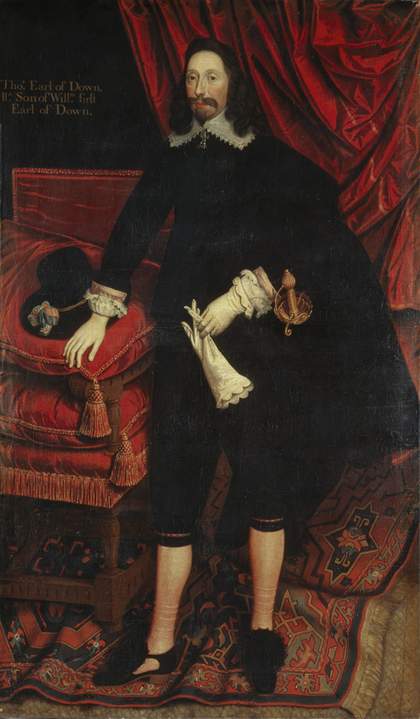
Fig.1
British School 17th Century
Sir Thomas Pope, later 3rd Earl of Downe c.1635
Tate
T03029
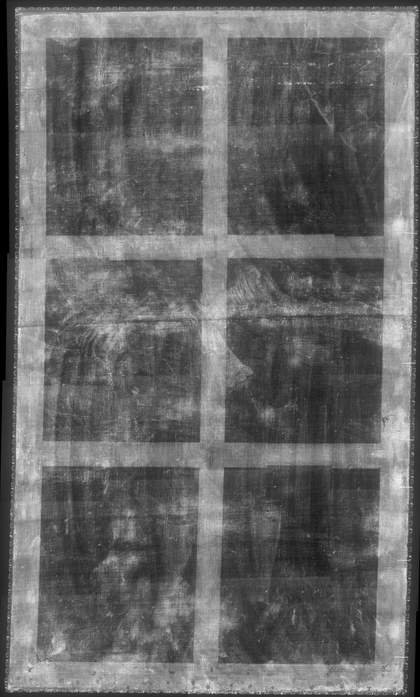
Fig.2
X-radiograph of Sir Thomas Pope, later 3rd Earl of Downe c.1635
This painting is in oil paint on canvas measuring 2016 x 1194 mm (fig.1). The support is made from two pieces of plain woven linen canvas, joined at a seam running slightly diagonally across the centre of the painting (fig.2). Both pieces of canvas have threads of uneven thickness, with 11 to 12 vertical threads and 10 to 11 horizontal ones per sq cm. Cusping is present on all but the lower edge, suggesting that the painting may originally have been two or three centimetres longer (fig.2).1
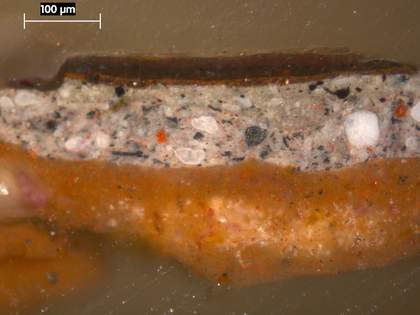
Fig.3
Cross-section through a dark fold of the curtain, photographed at x250 magnification. From the bottom of the sample upwards: opaque reddish brown ground, average thickness 160 microns; opaque grey priming, average thickness 65 microns; possible layer of animal glue size; another coat of grey priming, average thickness 60 microns; opaque tawny brown paint, average thickness 10 microns; opaque purplish brown paint; pinkish brown paint, contains much red lake and fluoresces white in ultraviolet light; varnish
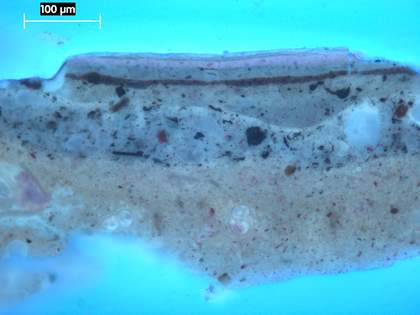
Fig.4
The same cross-section as Figure 3, photographed at x250 magnification in ultraviolet light
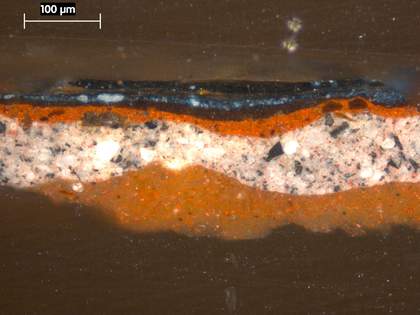
Fig.5
Cross-section through the carpet, 10 mm from the left edge, 310 mm from the bottom, photographed at x250 magnification. The design of the area is black patterning on blue and red. From the bottom of the sample upwards: opaque reddish brown ground; opaque grey priming; opaque bright orange coloured paint; opaque dark red paint, which fluoresces slightly grey in ultraviolet light; blue paint; dark glaze paint, which fluoresces bright white in ultraviolet light; opaque black paint; varnish
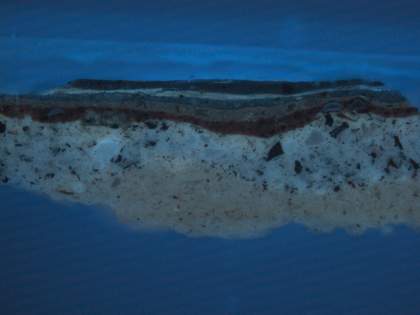
Fig.6
The same cross-section as in figure 5, photographed at x250 magnification in ultraviolet light
The ground is light reddish brown, composed of large quantities of calcium carbonate (chalk) with lead white, a range of ochres, cologne earth and a trace of vermilion. When dry it was given a double priming – two coats of grey paint mixed from lead white, chalk, charcoal black, ochres and cologne earth (figs.3–6).2 This colour was left visible in the painting as the darkest area of his collar.
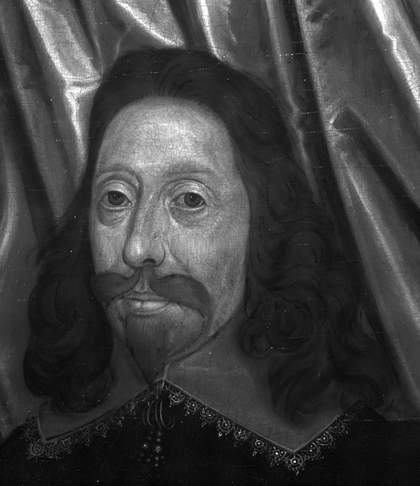
Fig.7
Infrared reflectogram showing the head
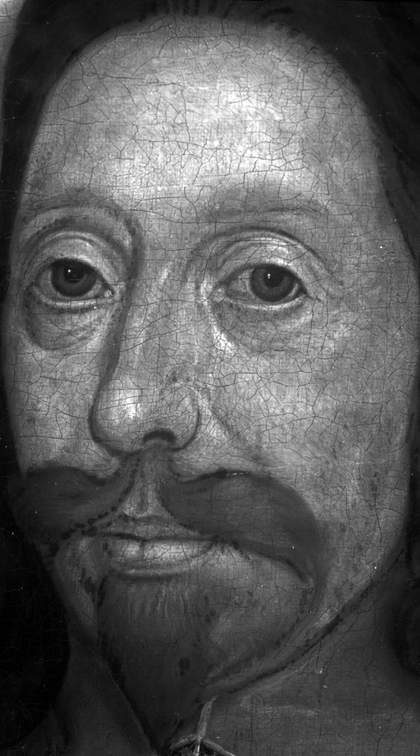
Fig.8
Infrared reflectogram showing the face
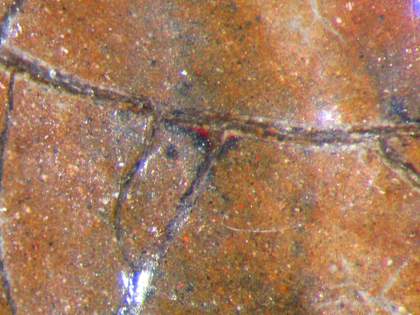
Fig.9
Microphotograph at x3.2 magnification of right corner of the mouth: red lake paint is visible beneath the black painted underdrawing
Strong, black outlines in the face show through final flesh-tones in infrared reflectography (figs.7–8). Some of these lines are made up of closely spaced dots, resembling those made during pouncing with charcoal powder during transfer of an image via a pierced cartoon; but these dots look like paint, as they have not smudged or disappeared during the subsequent application of paint, as charcoal would do. They appear to strengthen an initial brush drawing in bright red lake; a trace of this is visible under strong magnification at the right corner of his mouth (fig.9). An initial drawing in brushed red lake paint was sometimes used for making copies or versions of existing paintings.
Microscopic examination of the painting’s surface reveals thin dark reddish brown underpainting in the dark background. At the same time the red curtain and chair were laid in with opaque red and reddish brown tones to establish their general structure and folds. Opaque brick red and a deeper brown were used at the same stage for the lights and shadows of the carpet. The black costume was laid in with a similar brown to the background, reserves being left for the hand and glove.
The different areas were built up in orderly layers in all areas except the figure, which was worked wet-in-wet. In the curtains and chair the artist glazed the underpainting with dark red paint, then laid in bright opaque red for the highlights and almost black paint for the shadows. When this paint was dry, a final crimson glaze was applied overall, followed by details of the trimmings in mixtures based on lead tin yellow. The carpet was painted opaque red with a mixture of red and yellow ochres, calcium carbonate (chalk), lead white and a trace of vermilion, after which blue, black and red patterning was applied. The blues are based on the pigment indigo. The final crimson glazes in the curtain fluoresce bright pink when viewed in UV light in cross-section, suggesting that the red lake is madder.
The painting was cleaned, lined and treated at Tate in 1982, shortly after acquisition.
March 2020
